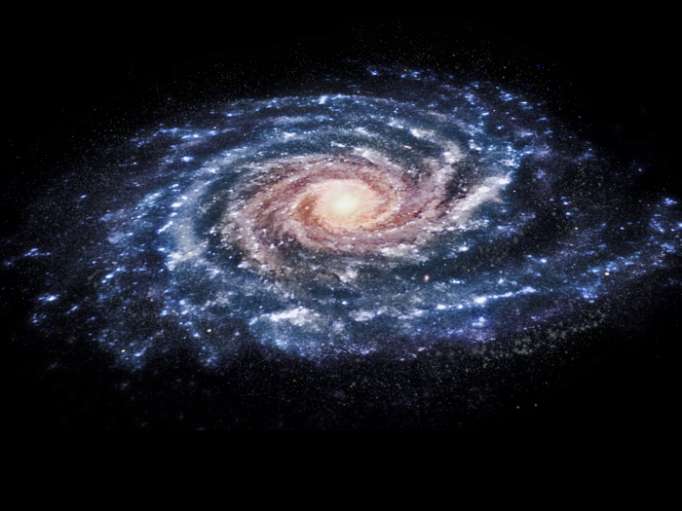Tracking the movement of over 6 million stars using data collected from the Gaia space observatory, they noticed unusual activity at the heart of our galaxy.
Some stars were moving on their own paths through the Milky Way rather than rotating uniformly with the rest of the galaxy.
Dr Teresa Antoja from University of Barcelona said she was “shocked” when she first saw these movements, and thought there must be something wrong with the data.
“At the beginning the features were very weird to us,” she said.
Reporting their findings in the journal, Nature, Dr Antoja and her colleagues suggested that the unexpected rippling movements of these stars were triggered when the Sagittarius galaxy sailed past it between 300 and 900 million years ago.
“It is a bit like throwing a stone in a pond, which displaces the water as ripples and waves,” Dr Antoja said.
This small galaxy of Sagittarius, formed from just a few tens of millions of stars, is currently being “cannibalised” as the much larger Milky Way gradually consumes it.
However, the last time the two galaxies interacted was not so direct.
As Sagittarius skirted the Milky Way, its gravity perturbed a few million stars and sent them flying off in different directions. The memory of this historic event can still be seen by carefully examining the velocities of the Milky Way’s stars.
The Gaia observatory is capable of measuring the three dimensional movement of stars using a combination of their position in space and their velocity.
When the scientists plotted this information on a graph it formed spiral shapes that indicated the unusual paths some stars are still taking.
The “snail-shell” patterns that emerged from the data had never been seen before because Gaia – which can accurately map the positions of over one billion stars – is a huge technological leap forward.
Nasa working to fix small leak on International Space Station
“It looks like suddenly you have put the right glasses on and you see all the things that were not possible to see before,” said Dr Antoja.
Despite this, the scientists said that their conclusions are based on relatively simple computer models and analysis. They now intend to examine the data in greater depth to learn more about the Milky Way’s history.
“The discovery was easy; the interpretations harder. And the full understanding of its meaning and implications might take several years,” Said Dr Amina Helmi from the University of Groningen, who also contributed to the research.
The Independent
More about: science
















































